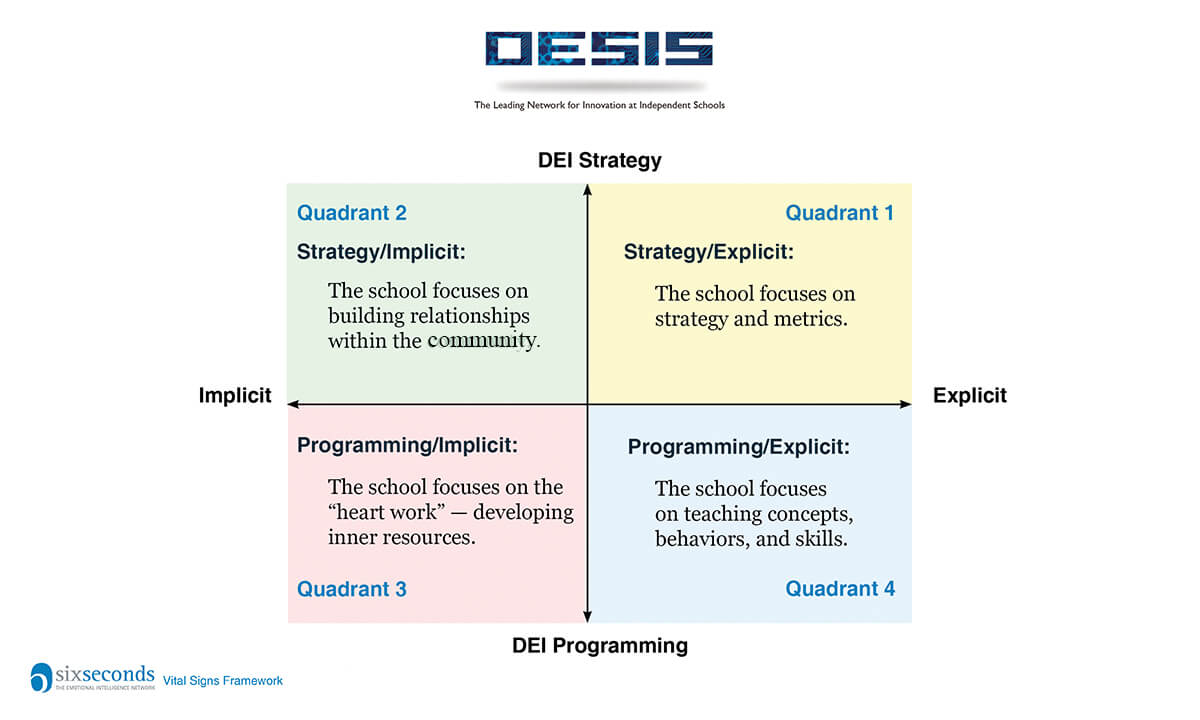By Joshua Freedman CEO, Six Seconds and Michael Eatman PCC, Founder, Culture7 Coaching
This is the first article in a five-part series that explores planning for DEI programs. Each article of the series will be supplemented by a webinar led by our distinguished authors. Part I is an overview of the planning process and identifies the key elements in the form of a four-quadrant chart. Subsequent articles will focus on one of the four planning quadrants illustrated in this first article.
Ask three DEI professionals for the best way to implement and you’ll get five conflicting answers. Whether it’s called JEDI, EDI, DEI, DIB or something else, they’ll have a shared goal, but dramatically different ideas and skill sets necessary on how to move toward it.
In talking with school leaders about DEI, we’ve found they feel an urgency to take action, and often are trying to drive DEI in an ad-hoc way and without meaningful institutional positioning or systems … so they’re working in a reactive approach. For example, in summer 2020, the death of George Floyd reignited the Black Lives Matter movement. Schools and other organizations immediately issued statements on their websites regarding their positions on DEI.…


